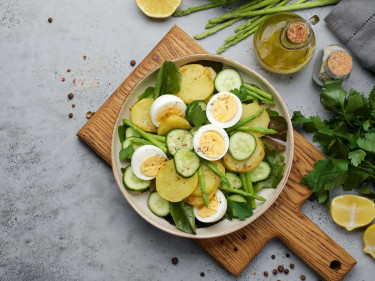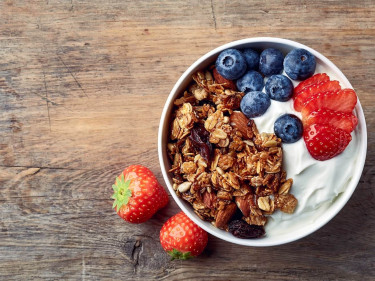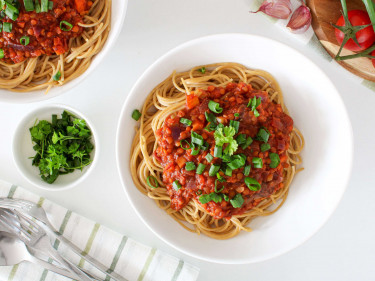Recipe makeovers for healthier meals
Some cooking methods are healthier than others, and picking a healthier method can be a useful way to make your meals healthier. There are a number of foods commonly added to meals that are high in fat, saturated fat, salt and/or sugar. Making simple swaps of these ingredients for healthier choices can add healthy nutrients to your meal, whilst reducing the quantity of less healthy nutrients.
Try these healthier cooking methods:
- Stir-fry, using spray oil
- Steaming
- Grilling
- Poaching
- Microwaving
- Roasting over a dish of water
- Baking using spray oil
- Air frier
Rather than salt, use herbs and spices instead to add flavour.
Add more non-starchy veggies to your dish!
Many dishes lend themselves to being packed out with more vegetables. By adding more vegetables to your dishes, you will increase the phytonutrients, as well as fibre. Non-starchy vegetables are nutrient-rich, and low in energy (e.g. tomatoes, spinach, broccoli). Use non-starchy vegetables to reduce your portions of other ingredients, including proteins, and complex carbohydrates. If you do not want to add vegetables to your meal, add a side of salad or steamed vegetables.
Try the following swaps to boost the nutrition in your meals:
When the recipe calls for this ingredient | Swap to these |
Milk, yoghurt | Skim or reduced fat varieties, or a can of reduced fat evaporated milk. Add after you have removed the dish from the hot stove or oven to avoid splitting. You can thicken milk by adding a heaped teaspoon of cornflour mixed in cold milk before it is heating- stir constantly |
Cream, sour cream | Replace cream and sour cream with the 85% less fat cream for cooking, or reduced fat evaporated milk. Add a teaspoon of lemon juice or vinegar if the recipe says to use “sour” cream |
Cheese | Use reduced fat cheese varieties. Use an extra light cheese slice to thicken sauces. Mix grated carrot through grated reduced fat cheese |
Butter, lard, copha or cooking fats | Use reduced fat margarine spreads, or avocado for sandwiches. In cooking, swap for polyunsaturated or monounsaturated margarine. You can replace some of the margarine in baking with a fruit puree |
Oil | Use an oil spray rather than frying. Reduce the amount of oil, when necessary, in a recipe |
Mayonnaise | Choose reduced fat varieties. Try substitutes like low fat yoghurt with mustard and lemon juice |
Dressings | Make your own. Using a combination of healthy oils such as olive, canola, avocado, sunflower, safflower or nut oils, or yogurt and add balsamic vinegar or other vinegars, lemon or lime juice, mustard, fresh or dried herbs, crushed garlic or mustard. |
Sauces | Extend your sauces by using evaporated reduced fat milk, or canned tomatoes Make a cheese sauce by steaming cauliflower, and when soft blend it with light ricotta cheese, and a small amount of grated reduced fat cheese. |
Meat/chicken | Choose lean meats and remove all visible fat. Add chopped fresh or frozen vegetables, canned tomatoes, kidney beans, chickpeas or brown lentils. Remove chicken skin before cooking. Include meat free meals each week, using tofu, legumes or eggs as a source of protein. |
Pastry | Make pies bottomless and cover with a lattice of filo pastry sheets or reduced fat frozen pastry sheets or mashed potato for a savoury pie. |
Coconut cream or coconut milk | Mix reduced fat evaporated milk with coconut essence or buy the version already flavoured. Use reduced fat coconut milk or cream. |
Salt | Remove or reduce salt in recipes. Use reduced salt versions of canned goods, stock and sauces. Add herbs and spices so you can leave the salt out |













